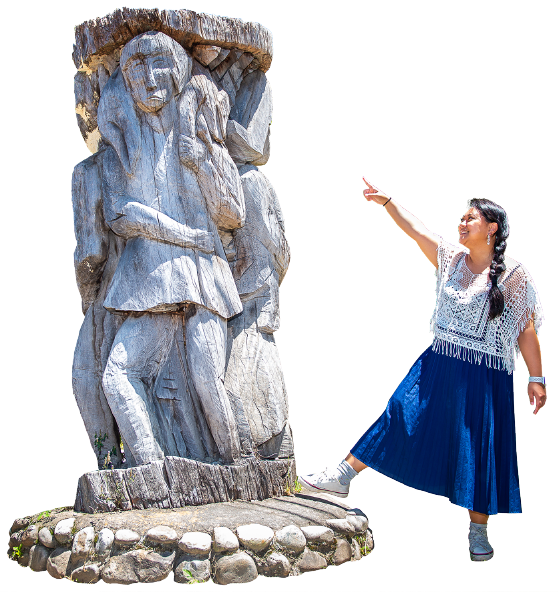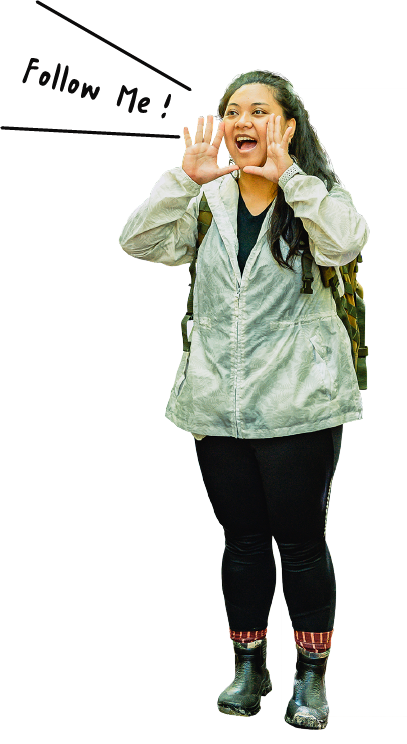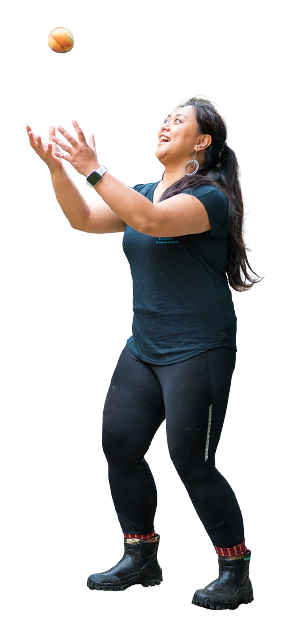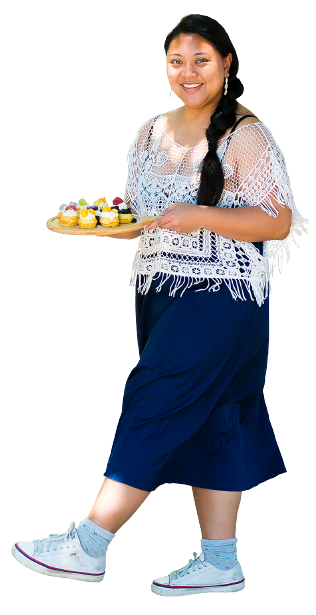
Muni Druluan
Born and bred in the city, visits their indigenous community with her parents during holidays
Event coordinator for the Taiwan Indigenous Film Academy
Amazing storyteller, inspired by everything and able to elaborate on anything

Growing up, I noticed that I have been searching for Adiri in every indigenous community in the mountains. My mother came from Cekele Adiri, Adiri Community, the highest indigenous community of the Rukai people, and two hours’ drive into the mountains from the low land. In my adolescent days when “nothing was ever good enough”, I was so accustomed to life in the city that I always felt Adiri inconvenient and outdated. My uncles were always taking turns climbing onto the roof to fix the antenna due to bad receptions, the most glorified dish at mealtimes was a large pot of pigeon pea with spare rib soup, and the influx of family members meant that gas would run out without notice and that we had to wait for large pots of water boil before we can clean ourselves... We would complain to our mother that we miss the deep-fried chicken cutlet, and the cable TV that was always readily available, since the only recreation we had was strolling the paths in the community. This journey home which we took for granted became a distant memory after Typhoon Morakot hit in my sophomore year at university. The endless rainstorm hit Adiri hard, completely destroying the entire road in front of our old house, and our home was relocated to the permanent housing at the foot of the mountain.
With the relocation to permanent housing, we were able to reach our grandparents’ house on my mother’s side much faster after we exit the highway. However, 5 years after the relocation, my grandmother passed away. It was then that I came to realize how much I missed our old indigenous community in the mountains. All the memory I had regarding my grandmother entailed a backdrop of Adiri in the mountains: early morning, grandma and grandpa would leave to work in the fields together, slowly walking into the mountains; when grandma was feeding the boar piglets, we as children would surround her all curious and wanting to help, grandma would say that this is too difficult for us while unable to hide her smile; she would pass over cooked taro, the staple food and the favorite food of our people, and say to us “eat, or you get hungry” in the few Mandarin words she can manage.
What I look forward to most of all on this journey to Qalang Smangus is learning the farm work. My grandparents used to say that since we grew up in the city and were still so young, it would be dangerous for us to help out in the fields. But even after we gradually came of age, they would still say that we should wait until we were older. High up there in Smangus, perhaps I can learn the work and be able to secretly say to my grandma, “look, Daudu, I am now old enough to learn the farm work. The elders here may not be Rukai, but they are also kacalrisiane, they are very nice, and they love the Lord just like you.”
Like Cekele Adiri, the main religion at Qalang Smangus is Christianity, when you visit the website of Smangus, you see quotes from the Bible as reminders and encouragements. With Adiri being hard to reach, the class-based society is maintained comparatively well. Grandma being the youngest daughter of the traditional leader from a neighboring indigenous community, had always cautioned her children about what we can or cannot do being we are with our status since she got married and moved to Adiri. We tend to think that once outside religion and culture come into the indigenous community, it will deeply impact the lives and ways of thinking of the people. But looking at the road as we drive into Smangus, I think perhaps that is just outside conjecture.
Indigenous peoples with profound traditional knowledge will no doubt open a road that is both traditional and modern, valuable albeit difficult. I look forward to seeing in person how Atayal elders at Smangus demonstrate to indigenous youth within and the outside world with profoundness their wisdom practices.




